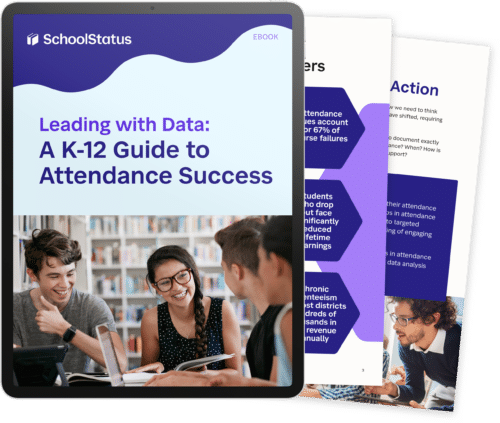
Featured Resource
Why Over Half of California School Districts Trust SchoolStatus
Read More >Join Mission: Attendance to reduce chronic absenteeism in 2025-26! >> Learn How <<





In today’s post-pandemic education landscape, chronic absenteeism has become one of the most pressing challenges for K-12 schools nationwide. What was once a 13% national average has skyrocketed to 28%—an 89% increase that continues to impact student outcomes across the country.
The numbers tell a sobering story:
But beyond these statistics lies an even more concerning reality: attendance issues account for 67% of course failures, far outweighing factors like demographics (7%) or test scores (5%).
Research from the University of Chicago has confirmed what many educators already suspected—attendance has emerged as the single strongest predictor of whether a student will graduate or drop out. This makes addressing absenteeism not just an administrative task but a critical mission with far-reaching implications.
The cost of inaction is substantial:
For districts themselves, the financial impact is immediate. With most state funding formulas tied directly to attendance, chronic absenteeism can drain hundreds of thousands in annual revenue.
Despite the scale of this challenge, many districts continue to rely on outdated, manual processes to track and address attendance issues. These approaches simply cannot keep pace with today’s absenteeism crisis.
Forward-thinking districts are transforming their approach by:
Districts that have embraced data-driven approaches are seeing remarkable improvements:
The path to improved attendance doesn’t require overhauling your entire system at once. Successful districts typically start with:
We’ve created the ultimate resource for school leaders ready to take action: Leading with Data: A K-12 Guide to Attendance Success

What you’ll discover inside:
The strategies in this guide have helped districts achieve up to 62% reduction in chronic absenteeism—even in today’s challenging environment.
DOWNLOAD THE FREE GUIDE and join the districts that are reversing the post-pandemic attendance crisis.
 Dr. Kara Stern
Dr. Kara SternDirector, Education and Engagement
Dr. Kara Stern began her career as an ELA teacher, then shifted into administration as a middle school principal. Dr. Stern is a fervent advocate for equitable communication and family engagement. She spent five years as Executive Director at Math for America, where she designed the professional learning community that exists to this day. An unexpected move to Tel Aviv launched her into the world of EdTech where she became the Director of Education Content for Smore and then the Head of Content at SchoolStatus. Outside of work, she indulges her love for reading, devouring two novels weekly, with a particular fondness for heists and spy stories.
News, articles, and tips for meeting your district’s goals—delivered to your inbox.



Ready to learn more about our suite of solutions?
